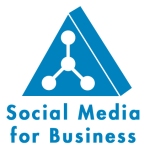 Imagine phoning Telkom customer service and they put you on hold for 30 minutes, you eventually get impatient and you drop the phone and log onto to Twitter. You send a Twit about how long you have been placed on hold and how inefficient you think Telkom customer service is. Within a space of an hour, over 50 people respond to your Twit and also express the same sentiments about Telkom.
Imagine phoning Telkom customer service and they put you on hold for 30 minutes, you eventually get impatient and you drop the phone and log onto to Twitter. You send a Twit about how long you have been placed on hold and how inefficient you think Telkom customer service is. Within a space of an hour, over 50 people respond to your Twit and also express the same sentiments about Telkom.
Before the end of the day, the Telkom public relations team meets to discuss their reputation and public perception and decide to give a public apology about their customer service department. This might sound fictional and farfetched but this is not far from reality at all. Social media platforms are both negatively and positively affecting the way companies operate. On the one hand social media is helping companies trace consumer traits and behaviour whilst on the other hand consumers are using the social media platforms to express their dissatisfaction with most company’s service delivery.
Until a handful of years ago, businesses reached customers and the world with advertising, press releases and letters. Consumers, meanwhile, would take their gripes, questions and compliments to the coffee shop or perhaps the customer hotline.
Social media as marketing tools
 All this has been changed by the World Wide Web’s ability to enable customers to research products and services, and then through the explosion of social media tools such as Facebook and Twitter which can enable them to voice their opinions about products. Most businesses appreciate customer feedback, and social media has proved that it has the potential to transmit information at a fast rate thus making the feedback loop so much efficient because the company will get information in time to react upon it.
All this has been changed by the World Wide Web’s ability to enable customers to research products and services, and then through the explosion of social media tools such as Facebook and Twitter which can enable them to voice their opinions about products. Most businesses appreciate customer feedback, and social media has proved that it has the potential to transmit information at a fast rate thus making the feedback loop so much efficient because the company will get information in time to react upon it.
Even though this can be seen as a much better two-way communication channel, companies are also taking advantage of the ability to monitor their customer’s social media dialogue. Because of the increased consumer-to-consumer communication going on the social media platforms it is important for brands to be always be at their pick and to know what their customers are thinking about.
Platform convergence


In an industry first Warner Bros Home Video announced a plan to sync up “friend” networks on Facebook with the interactive community-screening features of Warners’ Blu-ray Disc releases, starting with the release of “Watchmen Director’s Cut.” This convergence venture between Facebook and Warner will add to BD-Live’s current community based features that allow users to discuss a movie while viewing it through an online buddy list. This deal however, goes a step further and allows the users to watch a movie in High Definition and in the comfort of their lounges whilst chatting to distant friends.
“We want to do this partnership with Facebook because research has shown that consumers want to have social networking capabilities with BD-Live. Previously, those possibilities had been limited to one’s friends within BD-Live and the general BD-Live community,” said a Warner Bros spokesman.
Such advancements in the corporate world have shown that organisations are taking a keen interest in the behaviour of their customers who are on social networks. If a business can tap into the discussions about their products then they can be at a great advantage because that way they can always meet the ever changing customer needs.
How to use social media to enhance business performance
- Create informational podcasts about a product’s overall space, not just the product.
- Build community platforms around real communities of shared interest.
- Encourage customers to participate in existing social networks, and build relationships on their turf.
- Build sentiment measurements, and listen to the larger web for how people are talking about your customer.
- Build conversation maps for your customers using Technorati.com , Google Blogsearch, Summize, and FriendFeed.
- Experiment with Flickr or YouTube groups to build media for specific events.
- Map out an integrated project that incorporates a blog, use of commercial social networks, and a face-to-face event to build leads and drive awareness of a product.
- Start a community group on Facebook or Ning or MySpace or LinkedIn around the space where your customer does business.
- Help customers and prospects connect with you simply on your various networks. Consider a Lijit Wijit or other aggregator widget.
10. Recommend that your staff start personal blogs on their personal interests, and learn firsthand what it feels like,including managing comments, wanting promotion, etc.
Recent Comments